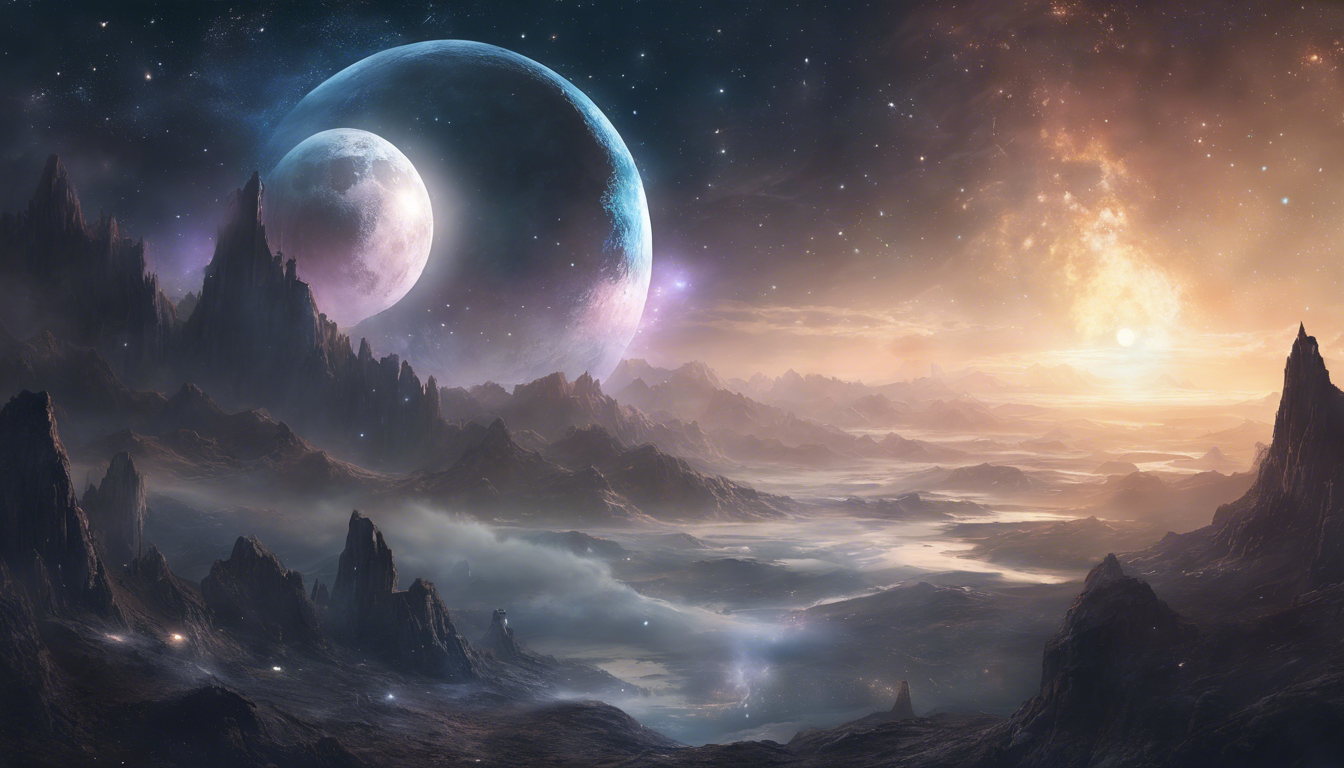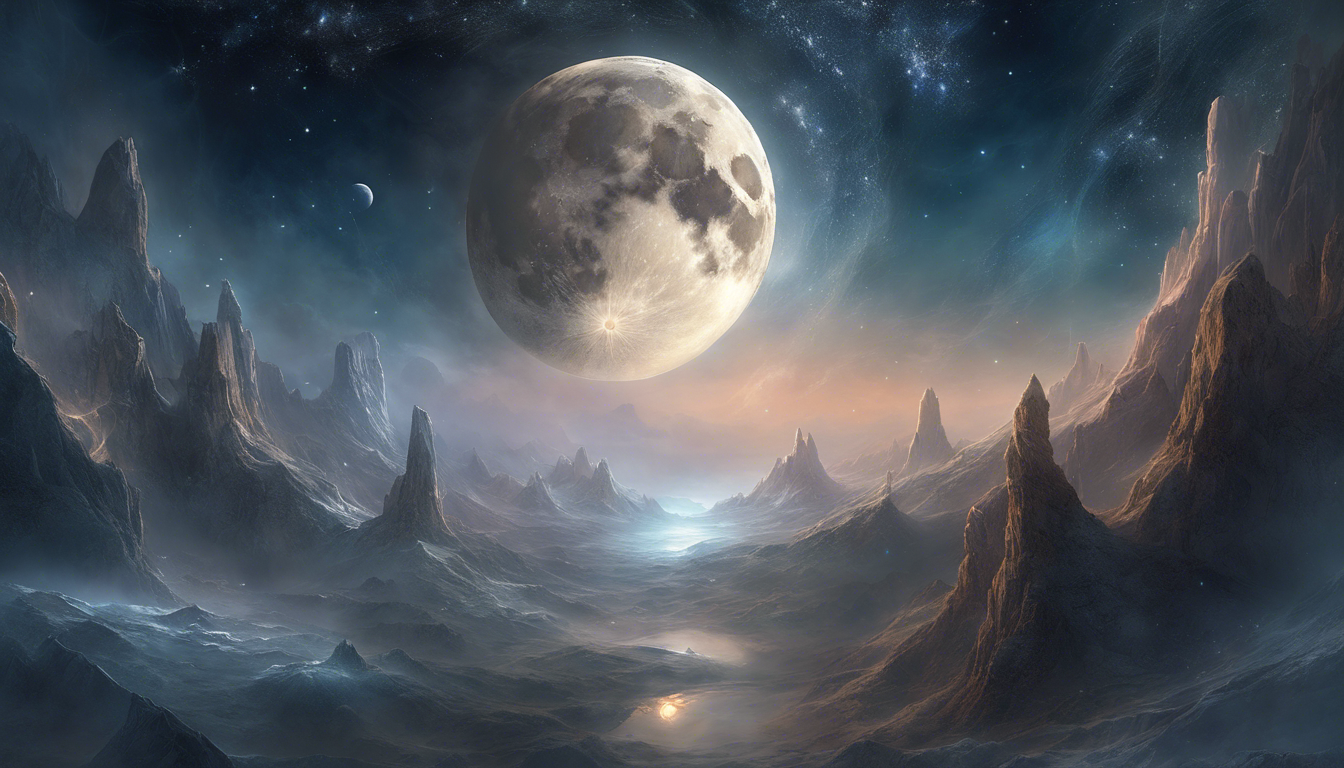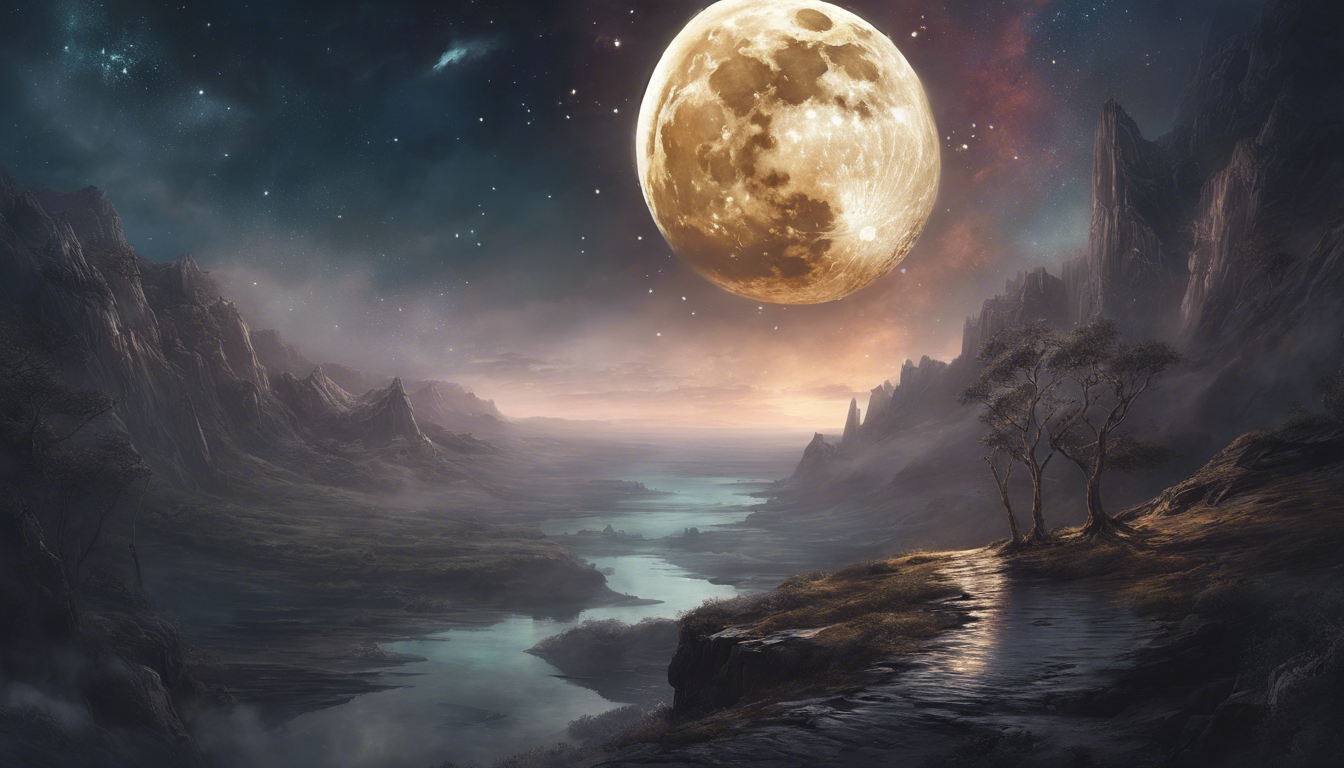Moon: Our Mysterious Celestial Companion
The moon, with its enigmatic presence in the night sky, has captivated human imagination for centuries. From ancient civilizations to modern scientists, the mysteries surrounding our celestial companion have inspired wonder and curiosity. Let’s delve into some of the most intriguing aspects of the moon that continue to perplex and fascinate us.
The Phases of the Moon
One of the most visible and well-known mysteries of the moon is its ever-changing phases. From the waxing crescent to the full moon, and then to the waning gibbous, the moon’s cycle influences not only the tides on Earth but also cultural beliefs and traditions. The phases of the moon have been linked to fertility, agriculture, and even human behavior. Exploring the reasons behind each phase and its significance can shed light on the mystical connection between the moon and our lives.
Lunar Tides and Gravitational Pull
The moon’s gravitational pull has a profound impact on Earth, causing the ebb and flow of tides in our oceans. This celestial dance between the Earth and the moon creates a harmonious yet complex relationship that shapes the world around us. Understanding the lunar tides and gravitational pull not only reveals the moon’s influence on Earth’s natural phenomena but also highlights the delicate balance that exists in our cosmic neighborhood.
The Dark Side of the Moon
Contrary to popular belief, the term “dark side of the moon” does not refer to a shadowy or mysterious place. Instead, it simply denotes the side of the moon that is never visible from Earth due to synchronous rotation. This phenomenon raises questions about what lies beyond our view and what secrets the unseen face of the moon may hold. Exploring the concept of the dark side of the moon invites speculation and contemplation about the mysteries that remain hidden from us.
In conclusion, the moon, our mysterious celestial companion, continues to intrigue and mystify us with its many enigmas. By unraveling the secrets of the moon’s phases, gravitational influence, and unseen face, we can deepen our understanding of this ancient cosmic companion and appreciate its enduring significance in our lives. Let us continue to gaze up at the night sky with awe and wonder, marveling at the beauty and mystery of the moon.
Stars: Enigmatic Beacons in the Night Sky

Stars have captured the imagination of humanity for millennia, twinkling in the vast expanse of the night sky like enigmatic beacons guiding us through the darkness. These celestial bodies, born from the remnants of ancient supernovae, hold within them secrets and mysteries that continue to elude even the most advanced scientific knowledge.
The Nature of Stars
Stars are massive spheres of burning gas, primarily composed of hydrogen and helium, undergoing nuclear fusion reactions in their cores. The energy produced during these reactions is what causes stars to shine brightly, emitting light and heat that can be seen from incredible distances.
Classification of Stars
Stars come in various sizes, colors, and temperatures, which astronomers use to classify them into different categories. From the searing blue giants to the cool red dwarfs, each type of star plays a unique role in the cosmic tapestry of the universe.
Life Cycle of Stars
As stars age, they undergo dramatic transformations, eventually meeting their demise in spectacular ways. From the violent explosions of supernovae to the mysterious remnants left behind like black holes and neutron stars, the life cycle of stars is a complex and captivating dance of creation and destruction.
Navigation by the Stars
Throughout history, stars have been used for navigation, with ancient explorers and sailors relying on their positions in the night sky to guide their journeys across oceans and deserts. Even in the modern world of GPS and satellites, the stars continue to serve as a timeless compass for those who look up and gaze at the heavens.
The Cultural Significance of Stars
Across cultures and civilizations, stars have held profound symbolic meanings, representing everything from guidance and inspiration to divinity and eternity. From the myths and legends of ancient societies to the astrological beliefs of today, stars have shaped human beliefs and storytelling for generations.
In conclusion, stars remain one of the most enduring mysteries of the cosmos, inspiring awe and wonder in all who ponder their celestial beauty and significance. As we gaze up at the night sky and contemplate the billions of stars twinkling above, may we continue to embrace the enigma and magic of these timeless beacons that light up the darkness.
Astronomical Phenomena: Unraveling the Universe’s Secrets

The universe is a vast and mysterious place, filled with incredible astronomical phenomena that continue to fascinate and intrigue scientists and stargazers alike. From supernovae to black holes, the cosmos offers a treasure trove of secrets waiting to be unraveled.
Supernovae: Explosions of Light and Energy
One of the most spectacular astronomical phenomena in the universe is a supernova, the explosive death of a massive star. During a supernova event, the star releases an enormous amount of energy, shining brightly for a brief period before fading away. These cosmic explosions are crucial for the creation of elements beyond iron and play a vital role in the evolution of galaxies.
Black Holes: Gravity’s Abyss
Black holes are another enigmatic astronomical phenomenon, where gravity is so strong that not even light can escape its grasp. These cosmic objects form when massive stars collapse under their own gravity, creating a point of infinite density known as a singularity. Black holes challenge our understanding of physics and hold many mysteries yet to be uncovered.
Galaxy Clusters: Cities of the Universe
Clusters of galaxies are like bustling metropolises in the cosmic landscape, each containing hundreds or even thousands of individual galaxies held together by gravity. These immense structures are the largest known gravitationally bound objects in the universe and provide valuable insights into the evolution of cosmic structures over billions of years.
In conclusion, astronomical phenomena offer a glimpse into the workings of the universe on scales both grand and minuscule. By studying these celestial events and structures, scientists can piece together the puzzle of how the cosmos came to be and how it continues to evolve over time. The universe’s secrets may be vast and complex, but with each discovery, we move closer to unlocking its mysteries.
Ancient Beliefs and Modern Discoveries: Connecting Past and Present Sky Mysteries

The Significance of Sky Mysteries in Ancient Beliefs
In ancient cultures around the world, the sky has always held a special significance. Civilizations like the Egyptians, Mayans, and Greeks believed that the movements of celestial bodies were linked to the divine and could influence human affairs. The stars, planets, and constellations were seen as guides for planting, harvesting, and even making important decisions.
The alignment of celestial events with earthly occurrences was often interpreted as omens or prophecies in ancient belief systems. For example, a solar eclipse might have been viewed as a warning from the gods, while a meteor shower could have been seen as a sign of upcoming prosperity.
Modern Discoveries Shedding Light on Ancient Wisdom
In recent years, modern science has made significant strides in understanding the ancient mysteries of the sky. Through astronomy, astrophysics, and archaeoastronomy, researchers have been able to connect the dots between historical artifacts and celestial phenomena.
One of the most fascinating discoveries has been the alignment of ancient monuments with specific astronomical events. For instance, the Great Pyramids of Giza are aligned with the Orion constellation, suggesting a deep understanding of stellar movements by the ancient Egyptians.
Exploring the Intersection of Past and Present
The intersection of ancient beliefs and modern discoveries offers a unique opportunity to bridge the gap between past wisdom and present knowledge. By studying the skies through both a historical and a scientific lens, we can gain a deeper appreciation for the cosmic connections that have inspired human thought for millennia.
Through collaboration between archaeologists, astronomers, and cultural anthropologists, we can continue to unearth the rich tapestry of sky mysteries that bind us to our ancestral past. As we delve deeper into the cosmos, we may find that the answers to our deepest questions lie not only in the stars, but also in the wisdom of ages past.


Article written by Dera
Greetings, I am Dera, a 35-year-old individual with a deep passion for spirituality. Through my website, I aim to share my insights and knowledge to help others on their spiritual journey. Join me on the path to inner peace and enlightenment.